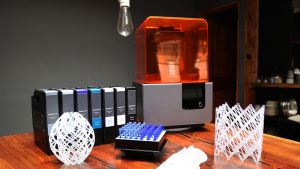3d printing and dentistry
It is hard to see how 3d printing and dentistry go together at first blush. However, it is having a major impact on the profession and will continue to do so in years to come.
3d printing and dentistry
Today, 3d imaging of teeth is widely used and there are numerous companies that produce intra oral scanners. Once the jaws are imaged for 3d printing and dentistry, there are a few things you can do with that data.
Firstly, you can design dental appliances like partial dentures, crowns or bridges. Together with a milling machine like CEREC and design software like CEREC Inlab you can mill out and actually create the crowns and bridges. There are times though that a model of the mouth for labwork or of the tooth preparations would be advantageous. Sometimes you might want study models before you begin to work, or a model to check the milled bridges on to confirm fit and shape. Dental milling machines do not do this efficiently so 3d printing and dentistry is the best way to generate those models.
Once we have the scanned jaw, I can print night guards or more importantly orthodontic appliances like Invisilign. Here is how it works. I scan a person’s jaws with their crooked teeth. We digitally make the teeth look perfect and the computer figures out how much pressure must be exerted on them and for how long. It then designs multiple appliances, each applying a bit more pressure than the last, causing the teeth to slowly align.
Other things like 3d printed surgical guides allow us to accurately place implants without doing damage to nerves as well as getting a better aesthetic result.